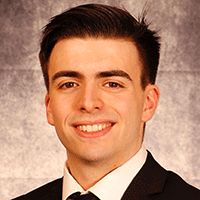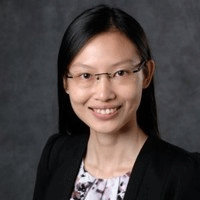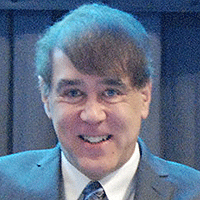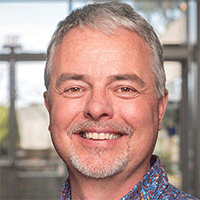Track Keynotes are speakers that will be highlighted within a specific track. The speaker will be presenting for an extended time and occur during a regular break out technical session.

July 28, 10:50am-11:28am
Ben Segall
Ph.D. student in Mechanical Engineering
Stevens Institute of Technology
Presentation Title: Hypersonic Turbulent Quantities and Drop Aerobreakup/Impact
Track keynote sponsored by the Fluid Measurement and Instrumentation Technical Committee (FMITC)
Abstract: Aerodynamic drag and heat transfer must be accurately predicted to design a high-speed vehicle. Doing so requires a physical understanding of supersonic/hypersonic turbulence and, relating to weather encounter, multiphase flow physics. The first part of the talk will discuss efforts to obtain data to support Morkovin's hypothesis, which is foundational to our understanding of high-speed turbulence. It states that "we can expect with confidence that the essential dynamics of these supersonic shear flows will follow the incompressible pattern." We will present new data supporting this hypothesis at Mach 6. In the second part of the talk, we will present new aerobreakup data that were obtained by observing the flow about a railgun-launched projectile as it processed an ultrasonically levitated water drop. Linear- and nonlinear-stability analyses were made and the results are compared to computations.
Biography: Ben Segall is a fourth-year Ph.D. student in Mechanical Engineering at Stevens Institute of Technology, working under Dr. Nick Parziale. His research focuses on boundary layer analysis and non-intrusive flow visualization techniques to better understand turbulent boundary layer behavior in high-speed flows.

July 28, 10:50am-11:28am
Dr. Junlin Yuan
Associate Professor, Mechanical Engineering
Michigan State University
Presentation Title: Simulation and Modeling of Non-canonical Turbulent Boundary Layers
Track keynote sponsored by the Fluid Mechanics Technical Committee (FMTC)
Abstract: The bulk of wall turbulence research has focused disproportionately on canonical flows along smooth flat plates with uniform freestream conditions. However, in engineering and environmental applications, such as flow around hydraulic turbine blades, navy platforms, and in rivers, most flows are dynamically complex, affected by surface roughness, surface curvature, wall permeability, and unsteadiness, etc. The consequence is that existing descriptions and models of turbulence have limited utility to design practice. My goal is to build essential physics into models, to enable a consistent description for turbulence across a wide range of flow complexities. The talk will start with understanding and modeling for rough-walled, equilibrium or non-equilibrium turbulent boundary layers subjected to longitudinal pressure gradients. Using data from direct and large-eddy simulations (DNS and LES), I will show that wall roughness significantly modifies turbulence under strong spatial or temporal variations. Data and insights are used to inform roughness-unresolved turbulence closures, such as linear eddy-viscosity models, which have long-time challenges in accurately predicting non-canonical turbulent flows or those with arbitrary roughness. The second part of the talk is on using DNS to better understand important transport processes of water and solutes in riverine systems—natural turbulent flows bounded by rough, permeable walls. A knowledge gap exists on how dynamics at the sediment grain scale affect multiscale hydrologic and biogeochemical processes. I will show that sediment roughness—typically ignored in existing predictive approaches—is an important drive of transport in nature.
Biography: Dr. Junlin Yuan is an associate professor in the Department of Mechanical Engineering at Michigan State University. She obtained both an MS and PhD degree (2015) from Queen's University, Canada. She developed large-scale, high-fidelity numerical simulation methods of complex turbulent shear flows. Her research goal is to push the boundaries of physical understandings of complex, realistic turbulence, and to develop physics-based data-driven models for a wide range of applications. Topics include non-equilibrium turbulence, wall roughness, wall permeability, turbulence-induced noise, and fluid-structure interaction. Applications cover engineering, environmental, and bio-locomotive topics. Her research has been funded by ONR, NSF, and the industry.

July 28, 2:00pm-2:38pm
Dr. Phil Ligrani
Professor of Mechanical and Aerospace Engineering,
Eminent Scholar in Propulsion
Department of Mechanical and Aerospace Engineering
University of Alabama in Huntsville
Presentation Title: Design, Development, and Performance of Innovative Micro-Scale, Millimeter-Scale and Macro-Scale Pumping Devices
Track keynote sponsored by the Fluid Application and System Technical Committee (FASTC)
Abstract: Design, development, and performance of several different types of innovative micro-scale, millimeter-scale and macro-scale pumping devices are considered. (1) First, the development and performance of a novel miniature pump called the rotary shaft pump (RSP) is described. The impeller is made by boring a 1.168 mm hole in one end of a 2.38 mm diameter shaft and cutting slots in the side of the shaft at the bottom of the bored hole such that the metal between the slots defines the impeller blades. Pump performance characteristics, including pressure rise, hydraulic efficiency, slip factor, and flow rate, are presented for several different pump configurations, with maximum flow rate and pressure rise of 64.9 ml/min and 2.1 kPa, respectively, when the working fluid is water. (2) Optimization of rotary shaft pump performance is accomplished by comparing rotary pump configurations with hooked blades pump, backward-curved blades ID=12.7 mm pump, contoured base pump, and backward-curved blades ID=19.1 mm pump, where ID is inner diameter. Pump are performance data with water include volumetric flow rate, pump head, and hydraulic efficiency, which show that the most optimal arrangement is the hooked impeller blades arrangement. (3) Also described is the development and testing of a rotating single-disk viscous pump, which consists of a 10.16 mm diameter spinning disk, and a pump chamber, as these are separated by a small gap that forms the fluid passage. Experimental flow rate and pressure rise data are obtained for rotational speeds from 100 to 5000 rpm, fluid chamber heights from 40 to 246 μm, flow rates from 0 to 4.75 ml/min, pressure rises from 0 to 31.1 kPa, and fluid viscosities from 1 to 62 mPa s. (4) A miniature viscous disk pump (VDP) is also utilized to characterize and quantify non-Newtonian fluid elastic turbulence effects, relative to Newtonian flow behavior. Such deviations from Newtonian behavior are induced by adding polyacrylamide to a sucrose water solution. Relative to Newtonian, pure water flows, the polyacrylamide solution flows give pump head coefficient data, dimensional pressure rise data, slip coefficients, specific speed values, and dimensional power data, which show significant variations and differences as they vary with flow coefficient or dimensional volumetric flow rate. (5) In another avenue of investigation, hydrophobic roughness is used to induce near-wall slip in a single rotating-disk micro-pump operating with Newtonian water. The amount of induced slip is altered by employing different sizes of surface roughness on the rotating disk. The magnitudes of slip length and slip velocities increase as the average size of the surface roughness becomes larger. Increased slip magnitudes from roughness are then associated with reduced pressure rise through the pump and lower radial-line-averaged shear stress magnitudes.
Biography: Dr. Phil Ligrani is currently the Eminent Scholar in Propulsion, and Professor of Mechanical and Aerospace Engineering in the College of Engineering at The University of Alabama in Huntsville. Prior to August 2014, Dr. Phil Ligrani was the Oliver L. Parks Endowed Chair, and Professor of Aerospace and Mechanical Engineering at Parks College of Saint Louis University. Prior to that appointment, he was the Donald Schultz Professor of Turbomachinery in the Department of Engineering Science at the University of Oxford. There, from 2006 to 2009, he was also Director of Oxford University's Rolls-Royce UTC (University Technology Centre) in Heat Transfer and Aerodynamics. From 1994 to 2006, he was a Professor of Mechanical Engineering, Adjunct Professor in the Department of Bioengineering, Director of the Convective Heat Transfer Laboratory, and Associate Department Chair in the Department of Mechanical Engineering at the University of Utah. Research interests include turbomachinery, convective heat transfer, fluid mechanics, transonic, supersonic, and hypersonic flows, as well as micro-fluidics, microscale and millimeter-scale pumping devices, and measurement technologies. He has received numerous academic awards and recognition from the University of Alabama in Huntsville, as well as from the American Institute of Aeronautics and Astronautics (AIAA), and the American Society of Mechanical Engineers (ASME). He is also currently a member of the European Union Academy of Sciences (EUAS).

July 29, 10:50am-11:28am
James Friend
Professor in both the Department of Mechanical and Aerospace Engineering
Jacobs School of Engineering and the Department of Surgery, School of Medicine
University of California, San Diego
Presentation Title: Acoustofluidic Interfacial Fluid Dynamics
Track keynote sponsored by the Multiphase Flow Technical Committee (MFTC)
Abstract: Understanding the dynamics at acoustically-excited fluid interfaces is central to advancing applications ranging from drug delivery to aerosol generation and nanofluidics. In this work, we examine the emergence of capillary wave turbulence at MHz excitation and measure nanoscale interfacial fluid motion using high-speed digital holographic microscopy (DHM). By combining macroscale turbulent dynamics with micro to nanoscale measurements, we establish a unifying framework for characterizing acoustofluidic interfacial phenomena across length and time scales.
Our study explores wave turbulence on the surface of a 40 µL sessile droplet driven by 7 MHz acoustic excitation via a lithium niobate substrate. Using transmission-mode DHM at up to 120,000 fps and nanometer vertical resolution, we identify discrete, kinetic, intermediate, and strong wave turbulence regimes. These transitions are quantified using nondimensional parameters derived from wave turbulence theory, including a bicoherence-weighted metric of nonlinear resonance broadening. We observe that MHz-driven capillary waves arise not from subharmonic (Faraday) mechanisms but from acoustic radiation pressure modulations, which deform the interface and reshape the acoustic standing wave field within the droplet. The resulting nonlinear feedback governs the onset and evolution of turbulence and eventually leads to atomization. Crucially, atomization is shown to be a strongly turbulent phenomenon.
In parallel, we report the manipulation and mixing of ~100 fL droplets within 100 nm-tall nanoslit channels using MHz-order SAWs. By designing traps connected by narrow necks, droplets are controllably split, transported, merged, and mixed, governed by an energy balance between SAW input and capillary resistance. Our experiments demonstrate discrete nanoliter-scale operations, including rapid mixing of nanoparticle-laden droplets within 0.4 s, overcoming the slow timescales of diffusion. These findings represent the first demonstration of digital nanofluidic control via MHz-order acoustics, but also expose the problem of identifying fluid interfaces as they are quickly moved by acoustic wave interactions: we are unable to see such interfaces at less than about 50 nm channel thickness.
To overcome this, we extend DHM to measure fluid interfacial dynamics in nanofluidic systems, and present nanometer-resolution reconstructions of fluid motion in 7–25 nm tall nanoslit channels, detecting both evaporation-driven flow and MHz-order surface acoustic wave (SAW)–driven transport. These channels exhibit extreme surface-to-volume ratios and capillary forces (>8 MPa), posing unique challenges for flow visualization. DHM overcomes these limits by capturing phase-encoded light fields and reconstructing nanoscale height distributions with shot-noise-limited error below 1.3 nm. We document both slow evaporation and high-speed flows (up to 0.12 m/s) driven by acoustogeometric streaming, revealing the critical role of nonlinear coupling between wall motion and fluid pressure.
Altogether, this work links macroscale turbulent capillary wave fields to nanoscale interfacial flows within a consistent acoustofluidic framework. Through ultrafast, full-field, high-resolution DHM, we characterize nonlinear transitions in wave turbulence and interfacial flow, establishing critical thresholds for atomization, wave coupling, and droplet manipulation. These advances have immediate implications for microscale spray systems, nanofluidic diagnostics, and energy-focused fluidic transport platforms.
Biography: James Friend leads the Medically Advanced Devices Laboratory in the Center for Medical Devices at the University of California, San Diego. He holds the Stanford S. and Beverly P. Penner Endowed Chair in Engineering and Physics, and is a professor in both the Department of Mechanical and Aerospace Engineering, Jacobs School of Engineering and the Department of Surgery, School of Medicine. He spent 14 years abroad as a faculty member in Japan and Australia before returning to the US. His research interests are principally in exploring and exploiting acoustic phenomena at small scales, mainly for biomedical applications. He currently supervises a team of 7 PhD students. Over the years, he has published over 350 peer-reviewed research publications, with 205 journal papers and 9 book chapters (H-factor = 61), and has 30 granted patents, completed 42 postgraduate students and supervised 23 postdoctoral staff, and been awarded over $37 million in competitive grant-based research funding. He most recently helped found Latchability, an infant health diagnostics company, GlideNeuro, an endovascular intervention technology company, and Sonocharge Energy, a rapidly rechargeable battery company which has grown to a valuation of $70M. Among other awards, he received UCSD's Distinguished Teaching Award in 2021, was noted as a highly cited author of the Royal Society of Chemistry in 2020, is a Fellow of the Royal Society of Chemistry from 2022, a Fellow of the IEEE from 2018, a Keck Fellow in 2018-21, and was awarded the IEEE Carl Hellmuth Hertz Ultrasonics Award from the IEEE in 2015.

July 29, 2:00pm-2:38pm
Simon Schneiderbauer
Department of Particulate Flow Modelling
Johannes Kepler University
Linz, Austria
Presentation Title: Length Scales, Energy Transfer and Energy Decay in Turbulent Gas-particle Flows: From Theory to Application
Track keynote sponsored by the Multiphase Flow Technical Committee (MFTC)
Abstract: In turbulent flows, the presence of solid particles significantly influences energy decay due to gas-particle momentum transfer (drag). In dilute gas-solid flows, particles tend to preferentially concentrate in regions of low vorticity within the surrounding fluid. Analysis of the turbulent energy spectrum reveals that particles enhance energy at smaller scales while reducing energy at larger scales. This behavior arises because particles do not perfectly follow the fluid motion at large scales and retain their energy longer at small scales compared to the surrounding fluid. This turbulence enhancement caused by particles is commonly referred to as pseudo-turbulence (PT), as its origin differs from the usual shear production mechanism. In the dilute limit, fluctuations in particle number density and velocity can, in principle, be interpreted as particle-phase turbulence; however, PT cannot exist without the fluid phase. The enhancement and reduction of turbulence at small and large scales, respectively, is also known in the literature as the pivoting effect.
Moderately dense turbulent fluid-particle flows, where particle-particle collisions are significant enough to justify a continuum description of the particle phase, have garnered increasing attention over the past decades. Under such conditions, particles behave similarly to a compressible fluid and can generate their own turbulence even in the absence of a surrounding fluid. This behavior contrasts with dilute flows and justifies the classification of these systems as multiphase turbulence. In moderately dense flows, the momentum coupling between the fluid and particle phases – such as drag forces – can introduce new sources of turbulence. For example, sustained fluctuations in the particle-phase volume fraction, such as particle clustering, can emerge. This necessitates a different theoretical treatment for moderately dense fluid-particle flows compared to the dilute limit.
In this talk, we provide a comprehensive overview of the theoretical framework for turbulent multiphase flows, with a particular focus on gas-particle systems. We emphasize key length scales, energy transfer mechanisms, and energy decay processes, as their proper understanding and modeling are essential for the efficient and accurate simulation of industrial gas-particle flows. Such simulations are critical for applications like fluidized beds, as well as for heat and mass transfer processes. Several examples highlight the importance of understanding turbulent multiphase flows at industrial scales. Finally, we outline the similarities between turbulent dispersed interfacial flows and turbulent gas-particle flows.
Biography: Simon Schneiderbauer is the deputy head of the Department of Particulate Flow Modelling at Johannes Kepler University (JKU) Linz. He earned his PhD in Engineering Sciences with distinction from JKU in 2010, where he dealt with the numerical modelling of snow drift in alpine environments. In 2011, he received the Erwin Wenzl Award for his outstanding doctoral thesis and began his role as a Senior Scientist at JKU. In 2015, he achieved his habilitation in Fluid Mechanics and Heat Transfer. From 2016 to 2023, he led the Christian-Doppler Laboratory for Multi-scale Modeling of Multiphase Processes with participation of major steel industry. Schneiderbauer's research focuses on the numerical and mathematical multi-scale modeling of multiphase flows, encompassing model development, experimental validation, practical applications and multiphase turbulence. Finally, Schneiderbauer (co)-authored more the 60 Journal publications in the field of multiphase flows, which cover basic therotical advancements to practical applications.